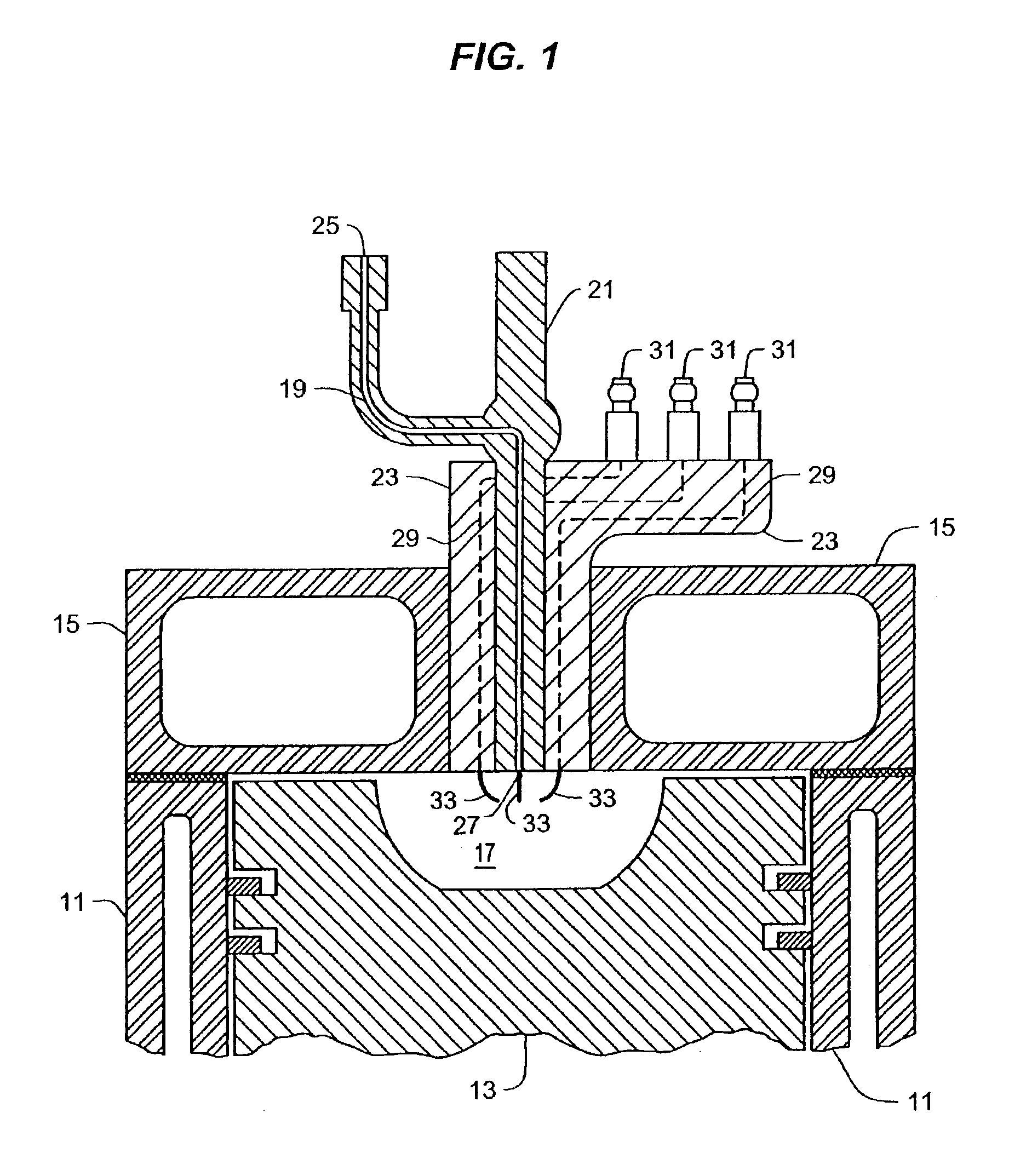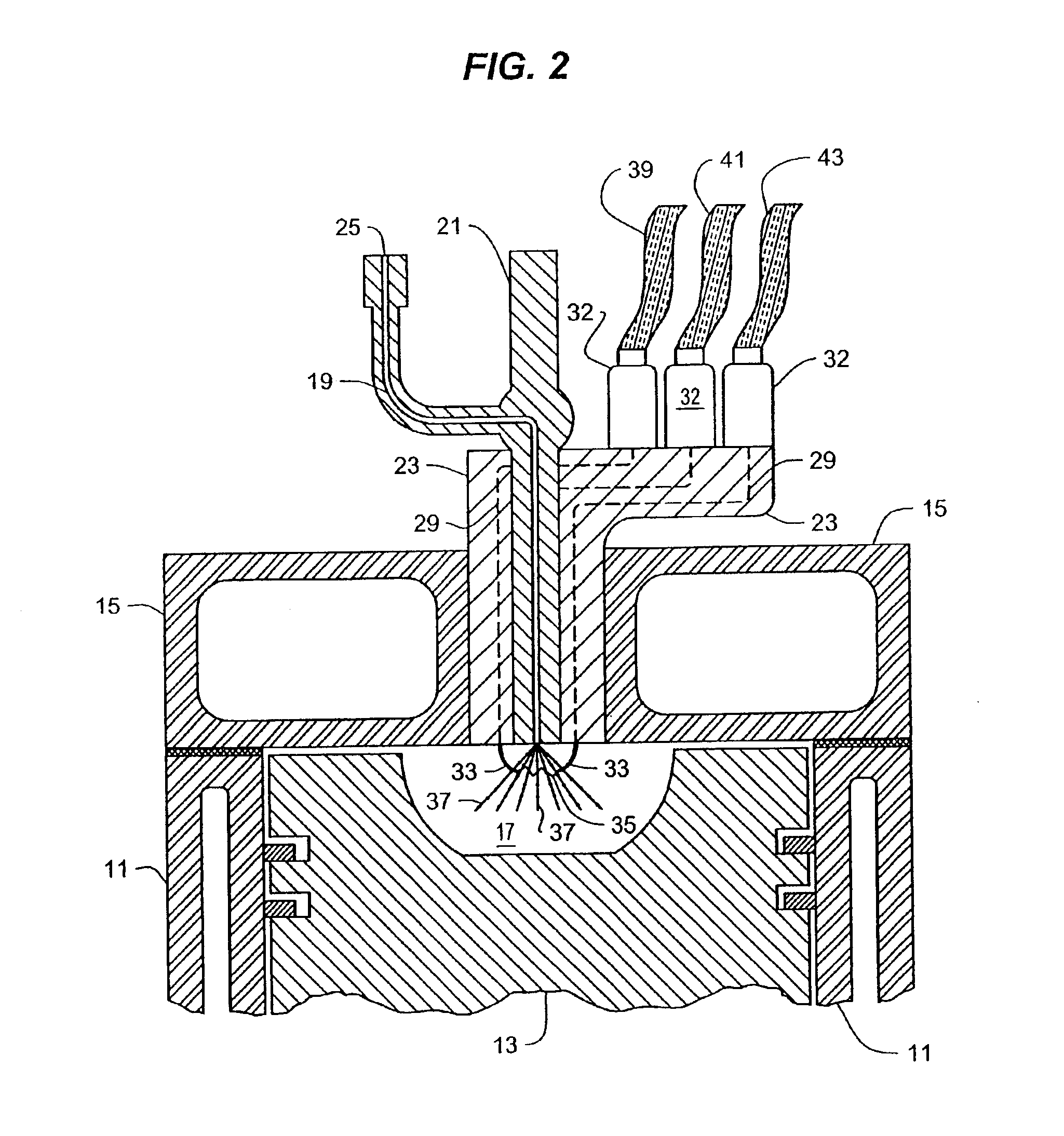Plasma ignition for direct injected internal combustion engines
a technology of internal combustion engine and ignition, which is applied in the direction of engine starters, combustion-air/fuel-air treatment, sparking plugs, etc., can solve the problems of long actual time (not cranking, rotation) that it takes for fuel and air to mix and burn, and the pollution of diesel engines, so as to improve engine durability, reduce nox emissions, and enhance engine life
- Summary
- Abstract
- Description
- Claims
- Application Information
AI Technical Summary
Benefits of technology
Problems solved by technology
Method used
Image
Examples
Embodiment Construction
[0095]The invention will now be described in further detail in connection with illustrative preferred embodiments for improving combustion in a direct injected internal combustion engine enabling the engine to achieve better fuel economy, reduced pollutant emissions, and more power. Within the scope of the present invention, this system could be applied to gas turbines and to reciprocating internal combustion engines that are direct injected of either the 2-stroke or the 4-stroke type that have been designed for use with any type of combustible fuel including gasoline, diesel or jet fuel.
[0096]Referring to FIG. 1, the present invention is shown mounted in a cylinder head 15 of a diesel engine. An engine block 11 has placed inside it a piston 13 and mounted on top of the engine block 11 is the cylinder head 15. A combustion chamber 17 is located inside the area surrounded by the engine block 11, the piston 13, and the cylinder head 15. Passing through the cylinder head 15 is a fuel i...
PUM
 Login to View More
Login to View More Abstract
Description
Claims
Application Information
 Login to View More
Login to View More - R&D
- Intellectual Property
- Life Sciences
- Materials
- Tech Scout
- Unparalleled Data Quality
- Higher Quality Content
- 60% Fewer Hallucinations
Browse by: Latest US Patents, China's latest patents, Technical Efficacy Thesaurus, Application Domain, Technology Topic, Popular Technical Reports.
© 2025 PatSnap. All rights reserved.Legal|Privacy policy|Modern Slavery Act Transparency Statement|Sitemap|About US| Contact US: help@patsnap.com



